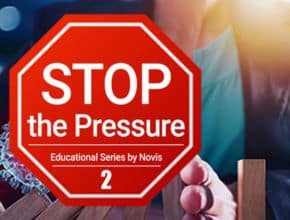Pressure Injuries: Who Is At Risk?

In this article we will discuss common causes and why these painful sores can be tough to treat.
Pressure injuries may be caused by one or more of the following factors:
- Pressure.When an area of the body is constantly exposed to pressure, specifically over a bony prominence, the soft tissues begin to break down in compensation for the unrelieved force. As the tissues begin to deform, vascular kinking may occur, ultimately reducing blood flow (i.e. ischemia). If ischemia persists for over an hour, necrosis can occur, and a pressure injury will likely result within the following 1-2 hours.
- Shearing. As gravity forces the body downward, resistance can occur between the body and a surface (e.g. laying on a mattress or sitting on a chair), leading to shearing (i.e. the separation of the skin from underlying tissue
s). Shearing can occlude blood flow faster than compression. The heels, shoulder blades, elbows, and ischial tuberosities are most susceptible to shearing. - Friction. Friction occurs when two surfaces (such as the coccyx rubbing on the surface of the bed) rub against each other, causing damage to superficial blood vessels. The heels and elbows are at the highest risk of being affected by friction.
- Lack of Mobility. Although immobility is not considered to be a primary cause of pressure injuries, it can increase one’s risk if paired with additional factors. Consider an immobile person who is unable to detect pain or is incapable of weight shifting to avoid prolonged unrelieved pressure, another factor known to cause pressure injuries.
- Moisture. The severity of a pressure injury can be intensified by moisture from sweat, urine, faeces, or excessive wound drainage.
- Incontinence. Increased levels of moisture, observed in incontinent individuals, may lead to skin breakdown and higher risk for developing pressure injuries.
- Malnutrition. Because malnutrition is associated with slow-healing and even non-healing wounds, undernourished individuals are at greater risk for developing pressure injuries. Individuals may present as healthy or heavy weight and still suffer from malnutrition.
Individuals experiencing significant weight loss/gain, suffering from lack of sensory perception due to illness (e.g. MS, Diabetes, Paralysis), or have been diagnosed with a dementia related illness are also at greater risk for developing a pressure injury.
Tough to Treat
Pressure injuries can form rapidly, sometimes in only 1-2 hours, yet they can take years to treat. Treatment can be a lengthy and expensive process. In order to undergo wound reconstruction, spasticity (i.e. stiffening of the muscles) must be under control, the patient must have reached peak nutritional status (i.e. albumin level >3.5 g/mL), and the wound must be kept clean and free of infection (this can be particularly difficult for incontinent patients).
References:
Bamba, R., Madden, J. J., Hoffman, A. N., Kim, J. S., Thayer, W. P., Nanney, L. B., & Spear, M. E. (2017). Flap Reconstruction for Pressure Ulcers. Plastic and Reconstructive Surgery – Global Open, 5(1), e1187. https://doi.org/10.1097/gox.0000000000001187,/small>
Bhattacharya, S., & Mishra, R. (2015, January 1). Pressure ulcers: Current understanding and newer modalities of treatment. Indian Journal of Plastic Surgery. Medknow Publications. https://doi.org/10.4103/0970-0358.155260
Qaseem, A., Mir, T. P., Starkey, M., & Denberg, T. D. (2015). Risk assessment and prevention of pressure ulcers: A clinical practice guideline from the American College of Physicians. Annals of Internal Medicine, 162(5), 359–369. https://doi.org/10.7326/M14-1567
This “Stop the Pressure” educational series, ebook, and an additional presentation, are prepared based upon the Clinical Practice Guideline for the Prevention and Management of Pressure Injury 2019.
References:
Australian Commission on Safety and Quality in Health Care. Safety and Quality Improvement Guide Standard 8: Preventing and Managing Pressure Injuries (October 2012). Sydney: ACSHQC; 2012. (June 2017).
Clinical Excellence Commission (AU). Pressure Injury Prevention Project. (Accessed June 2017)
Miles SJ, Fulbrook P, Nowick T, Franks C. Decreasing pressure injury prevalence in an Australian general hospital: A 10-year review. Wound Practice & Research: Journal of the Australian Wound Management Association 2013;21:148–56
Australian Commission on Safety and Quality in Health Care. National Safety and Quality Health Service Standards (second edition). Sydney 2017
Australian Wound Management Association. Pan Pacific Clinical Practice Guideline for the Prevention and Management of Pressure Injury 2019
